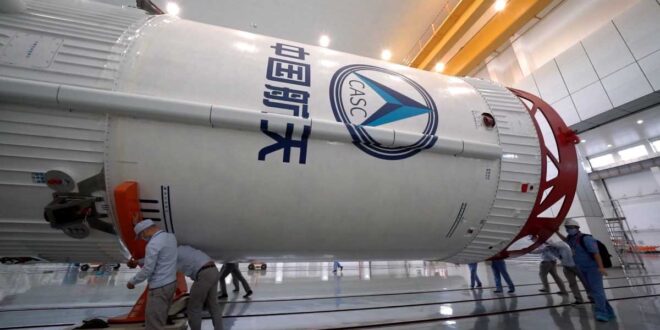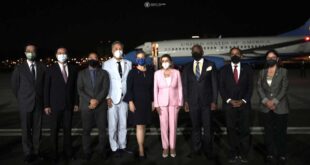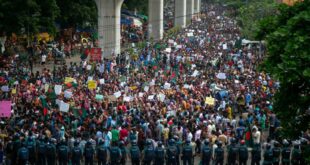Giancarlo Elia Valori
Manned cosmic flight is the most technologically complex and difficult aerospace project in the world. It represents a country’s strength in science, technology and economy.
Many countries have submitted plans for manned space flight, but for decades there have only been three States that could actually send men into space independently.
According to statistics, 80% of the over one thousand new materials in China in recent years have been developed thanks to space technology, and over two thousand have been shifted from space technology to various sectors of the national economy.
On May 5, 2020, the Changzheng 5B (Long March) space launcher developed for China’s manned space station project successfully lifted off from Wenchang (Hainan Island), officially kicking off the Third Step mission of China’s manned space project.
The selection of the third group of reserve astronauts for China’s manned space project was completed on October 1 last. Eighteen astronauts, i.e. seven pilots, seven flight engineers and four cargo experts, will participate in the third step of China’s manned space project.
With the intensive development of various tasks, Chinese manned space flight has entered the Chinese space station project.
In 1992, the Chinese manned space flight project was launched and a three-stage development strategy was established.
1) Launch a manned spacecraft; develop a preliminary design for a pilot manned spacecraft and carry out space application experiments.
2) Engage in new discoveries in the field of astronaut egress technology, spacecraft rendezvous and docking technology; establish a space laboratory and solve problems related to it with short-term assistance.
3) Build a space station to solve the problem of large-scale space applications with long-term assistance.
Since 1992, generations of astronauts have been self-sufficient and have continued to work: from unmanned flight to manned flight; from in-ship experiments to out-of-ship activities; from single-ship flight to the stable operation of combined bodies.
On October 15, 2003, China’s first manned spacecraft, Shenzhou V, carried astronaut Yang Liwei into space. After 21 hours and 23 minutes, as well as 14 orbits, the spacecraft landed safely. China became the third country in the world capable of sending humans into space independently.
In 1957, the USSR’s first artificial satellite ushered in the era of the human conquest of space. On April 12, 1961, Soviet astronaut Jurij Gagarin undertook the first human space flight in the Vostok 1 spacecraft. On May 5 of the same year, American astronaut Alan Shepard remained in space for 15 minutes in the Freedom 7 spacecraft, thus becoming the second astronaut in human history.
Faced with the successes of the two superpowers in the space field, President Mao was shocked and asked: ‘How can we be considered a powerful country? We cannot even put a potato into space!!!”
In the early 1970s, China began research into manned space flight. After the launch of China’s first artificial earth satellite, the Dongfanghong 1, Qian Xuesen, the then President of the Fifth Academy of the Ministry of National Defence, pledged that China should also undertake manned space flight.
Project 714 (i.e. 1971, April) was born and the probe was to be named Dawn One. However, due to various financial and technological problems, the project was eventually shelved.
Over the subsequent 20 years, Chinese space technology continued to develop. Most notably in 1975, China successfully launched and recovered its first satellite, thus making it the third country in the world to operate satellite recovery technology after the United States and the Soviet Union, as well as laying a solid foundation for China to carry out manned space flights.
But even so, it took years from the formal establishment of a manned space project to the regular launch of China’s first astronaut.
Since the birth of manned space flight, some scholars have calculated that, as a percentage of GDP, manned space flight is the most expensive technological project in history.
A U.S. shuttle costs up to 500 million dollars per flight, and 300 to 400 million U.S. dollars are needed for maintenance.
China’s manned space project is known for its high efficiency and cost-effectiveness. According to the data released by the Beijing Engineering Bureau, from the start of the project to the completion of the launch of the Shenzhou VI spacecraft in 2005 (i.e. when the first phase of the manned space project was completed), the total cost of the project reached about 20 billion yuan.
Manned space flight incorporates many modern state-of-the-art technologies. The structure of carrier rockets, manned space vehicles and spacecraft is complex, with tens of thousands of parts and components. The failure or malfunction of just one part can cause an accident.
On February 1, 2003, the U.S. space shuttle Columbia disintegrated and exploded on re-entry, killing all seven astronauts, when a fragment of foam accidentally fell out of the fuel tank.
If a country is able to send its astronauts into space, it will not only reflect on its national strength, but will also greatly enhance national pride and improve the sense of State and internal cohesion.
Deng Xiaoping stated: ‘If China had not a nuclear bomb, a hydrogen bomb or launched satellites since the 1960s, it would not be an important country with a strong influence and would not have its current international status’. Hence, in the 21st century, manned space flight represents all of this.
Obviously Chinese astronauts have the right to be proud, because they have achieved all this little by little and with their own efforts.
Let us consider the case of the International Space Station (ISS), built jointly by nineteen countries and regional organisations. This long list includes developed and developing countries (Brazil, Kazakhstan, Malaysia, South Africa), but not China. Some States have deliberately imposed a strict embargo on China, in an attempt to exclude it from the ISS.
All this makes it clear to Chinese astronauts and scientists that key fundamental technologies cannot be traded or bought.
The Chinese are therefore firmly following the path of independent development and innovation to enhance manned spaceflight without the help of anyone else.
Around 2022, a Chinese self-built space station will be completed and deployed and, according to foreign sources, the ISS will be decommissioned in 2024.
Some countries have turned to China in search of opportunities and cooperation. This switching of sides explains once again that only by mastering key fundamental technologies does the People’s Republic of China have a say and visibility.
Facts have shown that, even under the long-term technical embargo of some countries, China’s manned space industry has taken off ‘against the wind’.
With the hard work of generations of astronauts, it has gradually grown and developed into a space power, with distinctly Chinese characteristics.
If manned space flight is a flagship endeavour, independent innovation is the scale that supports efforts.
In 2022, the Chinese Space Station will officially complete its in-orbit construction task. At that juncture, China will bring high-level experimental equipment to it in the fields of aerospace medicine, space life and biology, materials, microgravity and fluid combustion, physics, astronomy, etc.
At 23:11, on December 1 last, the Chang’e-5 probe successfully landed on Earth. The main mission of the exploration was to collect and “pack” about 2,000 grams of lunar soil and rock samples. In fact, China has taken another step towards a manned landing on our satellite.
GIANCARLO ELIA VALORI
Honorable de l’Académie des Sciences de l’Institut de France
President of International World Group
 Geostrategic Media Political Commentary, Analysis, Security, Defense
Geostrategic Media Political Commentary, Analysis, Security, Defense





